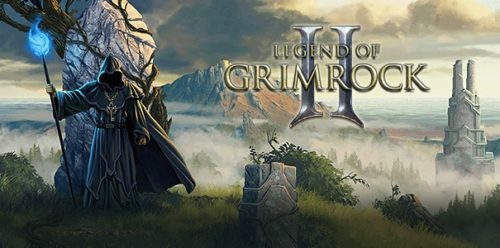The Finnish independent studio Almost Human surprised everyone with its Legend of Grimrock when it appeared in 2012. The Dungeon Crawler genre had disappeared from the West some time ago, leaving only Japan as the last bastion of a genre that was once large and essential within the panorama of computers and even consoles in the western market.
With modest resources and a strong will to rescue the pillars of the genre, the team designed a huge dungeon full of monsters, traps and intricate puzzles, a place that let the feelings of challenge and improvement that were enjoyed with the games of yesteryear bloom. It was a round game that excited the public and showed that there was room for this kind of titles.
The study has not fallen asleep in the laurels to face this sequel, a game that at all levels is really an example of how to propose a second part. True to its roots, understanding what worked and using it as a basis to build something bigger, more ambitious and better in
general terms. One of its novelties jumps to the view from the first moment of departure: a cage, a blue sky and a sea .
If in the first game we were taken in zeppelin to the top of a mountain-prison from which it was almost impossible to escape, now our prison is more pleasing to the eye but no less terrifying: the island of Nex, a place infested with monsters and with many secrets to discover.
Before that we find the new possibilities in regard to group formation, formed by four members that can be pre-established or to the user’s taste. If you choose to customize, you must choose race for each member among the options of Human, Minotaur,
Lizard Man, Insectoid, and Rat Man , each with its own racial advantages and disadvantages. The gigantic Minotaurs have a +5 strength and a +4 in vitality, but a -4 in dexterity and -3 in strength of will in addition to needing three times as much food as other races to keep functioning; while, the Lizard Men count on a +2 in dexterity and a -2 in force of will, with a own passive one that gives a 25% of additional resistance to him to any damage-.
Once the race is chosen, you can establish a class, although this time you have opted for a more flexible system in the first one – which decreases the chances of ending up with a less functional group. Now, choosing a class only determines the
attribute points in one or the other direction according to the function of the same, but then we can distribute our experience in the direction we want, assigning points in any of the 16 attributes, so that we can have warriors with knowledge of magoa or any other combination.
The pre-established classes are Alchemist, Barbarian, Battle Wizard, Warrior, Knight, Rogue and Wizard, with the extra class “Farmer”, small joke of Almost Human that consists of a class that does not raise level fighting but eating -which on the other hand adds a funny variation-.
This done we find ourselves in the aforementioned cage with the mission to escape and start exploring the island where we are.
There are hardly any narrative elements except for some loose pieces and a little more emphasis on the final part, but that is part of their nature and the history of the genre, so it is not something to throw in the face. More interesting is the game structure, whose initial sensations could make us think that we have landed in a proto-sandbox like Might & Magic III,
Nothing could be further from the truth. We may have a variety of environments and blue skies, but we have an unmistakable Dungeon Crawler of pure strain and more expansive than the original, trapped in a dungeon dungeon that requires a methodical approach to advance. The apparent freedom to go anywhere is quickly crushed by the constant dead spots where you have to think about how to move forward or if you have the means to do so.

